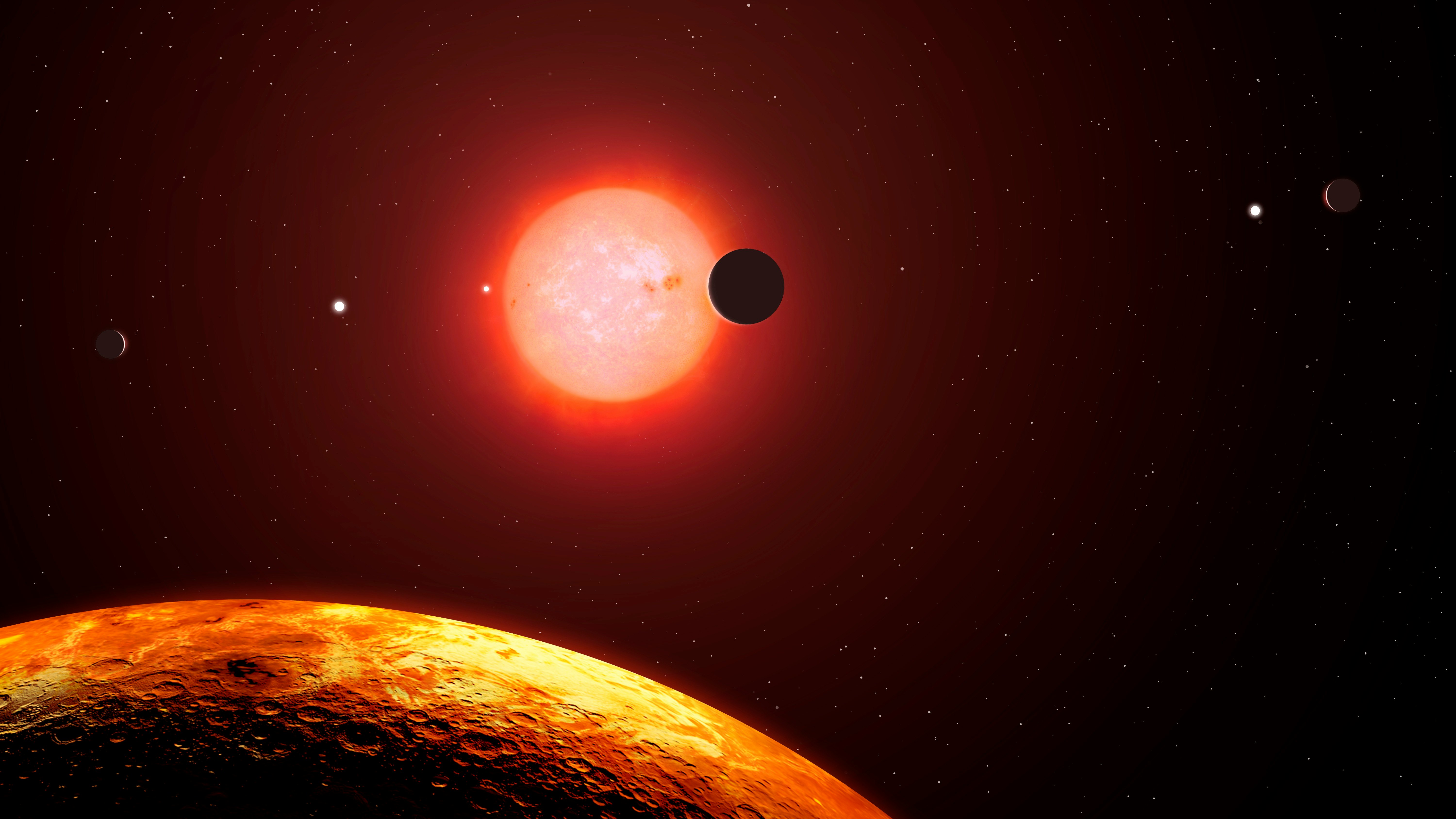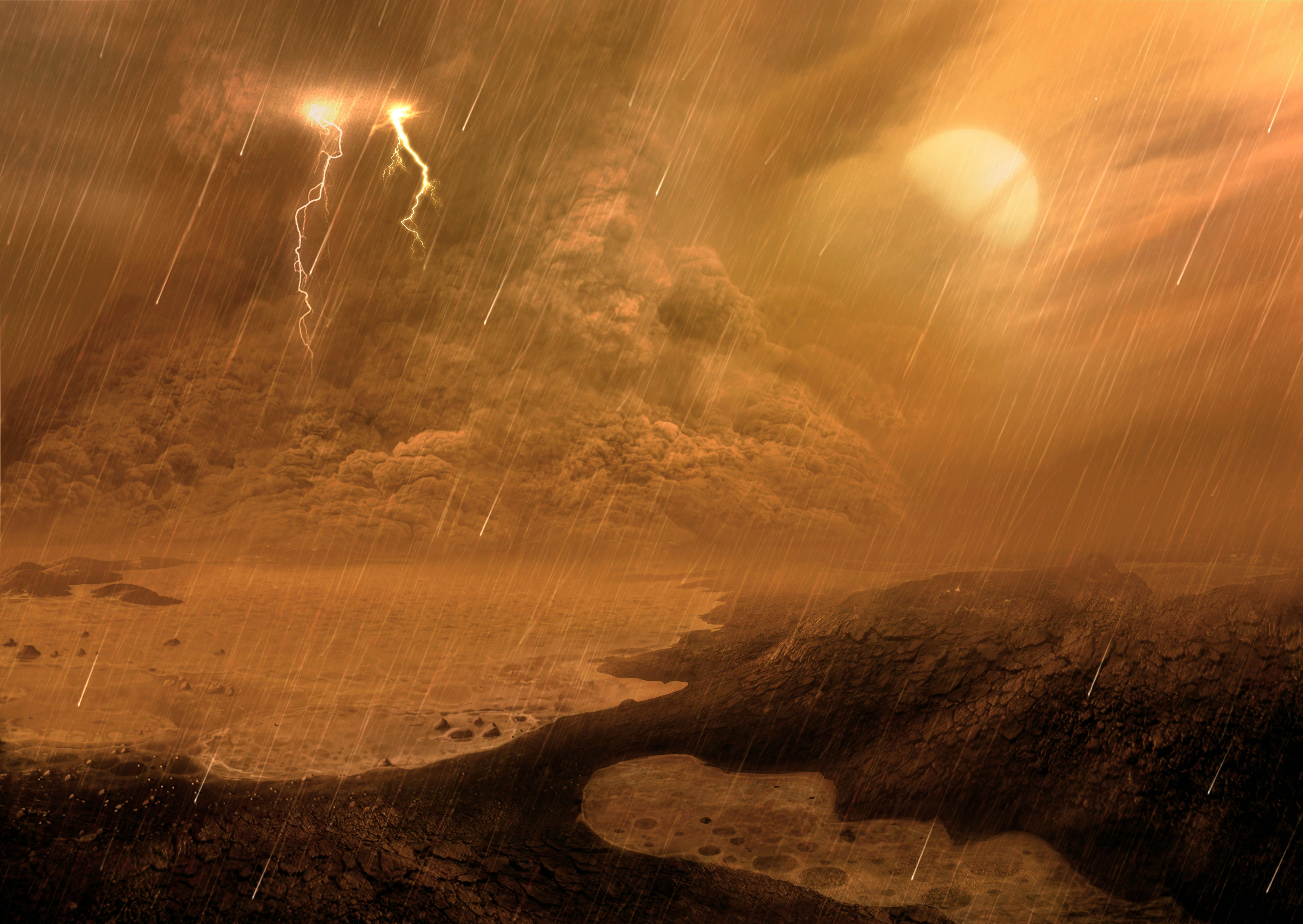
NASA’s James Webb Space Telescope is starting its second year of science, and from its vantage orbiting the second LaGrangian point, behind Earth but orbiting the Sun, JWST will be observing the universe 24/7 to keep up with astronomers’ demand for new data. Here are four of the most intriguing questions JWST will help scientists answer in the coming year.
Do the most promising exoplanets even have atmospheres?

If we’re going to find signs of life on a distant world, it’s probably going to be on a rocky little world orbiting a red dwarf star like TRAPPIST-1 or SPECULOOS-2, mostly because these worlds are both more common and easier to see than planets orbiting a habitable distance from brighter, Sun-like stars.
But red dwarf stars are notoriously prone to stellar flares, blasting everything nearby with radiation and powerful stellar winds, and their habitable zones are worryingly close to the stars themselves. Recent studies of the two planets orbiting closest to TRAPPIST-1 have been discouraging; neither world seems to have much of an atmosphere, if any.
Several teams of astronomers are hoping to use JWST to find out whether these exciting little worlds are really good prospects for the search for alien life.
Université de Liège planetary scientist Michael Gillon and his colleagues want to take a second look at TRAPPIST-1b and TRAPPIST-1c. Previous studies of these two planets suggest that if either of them has an atmosphere at all, it's an extremely thin one — and that's what Gillon and his colleagues hope to find with the Mid-range Infrared Instrument (MIRI) by measuring changes in the amount of heat radiating from the planets during their orbits. If either of the two innermost planets, the ones most heavily blasted by TRAPPIST-1's flares and solar winds, has managed to cling to even a thin scrap of an atmosphere, that's a good sign for the potentially-habitable worlds farther from the star.
Elsewhere in the galaxy, planetary scientist Hannah Diamond-Lowe of the Technical University of Denmark, and her colleagues, plan to survey nine rocky, Earth-sized exoplanets around red dwarf stars with MIRI to find out whether they have atmospheres. And University of Chicago planetary scientist Michael Zhang and his colleagues plan to measure the spectrum of light from exoplanet TOI 2445b, a rocky world about twice the size of Earth that orbits perilously close to its host star. Their measurements should reveal whether the planet has an atmosphere or just bare rock.
The results of all these observations, according to Diamond-Lowe, should “enable us to chart a course to the most promising of our rocky world neighbors to investigate further, or else send us back to the drawing board to invest our time in harder-to-reach cooler targets that are more likely to retain atmospheres.”
How did galaxies evolve?

Last year, JWST revealed what might be a pair of galaxies colliding in the very ancient universe, less than 4 million years after the Big Bang. The big, majestic spiral galaxies we see in our very modern cosmic neighborhood probably grew from a series of mergers between smaller early galaxies, and MACS0647-JD suggests that process started when the universe, and galaxies themselves, were very young. A team led by Abdurro'uf Abdurro'uf of Johns Hopkins University will take a closer look at the pair to unravel their history and their fate.
Meanwhile, astronomer Anna de Graaf, of the Max Planck Institute for Astronomy, and her colleagues will use NIRSpec to study about 100 of the distant galaxies astronomers discovered in some of JWST’s first deep-field images of space. The galaxies de Graaf and her colleagues will study are between 10 and 13 billion light years away, which means we see them as they appeared when the universe was very young.
And National Astronomical Observatory of Japan astronomer Jorge Zavala and his colleagues will use MIRI to look at two even older galaxies, about 13.1 billion light years away. When the light we see left these galaxies, the universe was only about 700 million years old, which means these galaxies date to just before the merger in MACS0647-JD. Zavala and his colleagues want to study the galaxies’ chemical makeup, how much dust is floating around inside them, and other properties.
Harvard University's Daniel Eisenstein and his colleagues will search for some of the earliest galaxies in the universe, dating back to the first few hundred million years of the universe. By measuring the galaxies’ chemical spectra with NIRSpec, Eisenstein and his colleagues hope to learn about their chemical makeup, star formation habits, and even some details about the supermassive black holes at their centers.
What’s Going on in Earth’s Own Backyard?

JWST was designed to look at small, dim things across the vast distance of space, but it can also focus a little closer to home. Over the past year, JWST revealed startling images of the giant planets of our Solar System, and found fascinating chemistry at some of their icy moons. In its second year, astronomers will use JWST to study a few of the weirdest, most interesting — and potentially habitable — places in our Solar System.
Cornell University planetary scientist Jonathan Lunine and his colleagues will point NIRSpec and MIRI at Saturn’s bizarre moon Titan, a world that looks unnervingly like Earth except that it’s made of all the wrong stuff: liquid methane rains from orange skies to fill hydrocarbon lakes surrounded by rock-like shores of water ice. Lunine and his colleagues will use MIRI and NIRSpec to look for seasonal changes in Titan’s smoggy atmosphere, study its clouds of methane, and map the makeup of its frigid surface. They’ll compare their findings to earlier data from NASA’s Cassini orbiter to learn more about this strange world, and their data may help scientists make plans for NASA’s Dragonfly lander, set to launch in about a decade.
Another of Saturn’s moons, Enceladus, hides an ocean of liquid water beneath an icy shell and is one of the most likely spots in the Solar System for alien life to be hiding. And since the next space mission to actually visit Enceladus may be at least 20 years away, JWST is our best hope of learning more about the chances of life swimming beneath the moon's ice.
Southwest Research Institute planetary scientist Christopher Gein and his colleagues will use NIRSpec to measure how much material from the dark ocean depths is spattered on the ice, thanks to the plumes that erupt from cracks in the icy crust. In particular, they're interested in chemicals like ammonia, carbon dioxide, hydrocarbons, and hydrogen peroxide, among others.
How Fast is the Universe Expanding?

We know that the universe is still expanding outward, riding the momentum of the Big Bang. We even know about how fast the universe is expanding, a measurement called the Hubble Constant. But when physicists try to be more precise, they get slightly different results depending on the measurement technique they use, a confusing dilemma called the Hubble Tension.
Earlier this spring, University of Minnesota astronomer Patrick Kelly and his colleagues spotted a supernova in a distant galaxy, projected in four different spots on the sky thanks to gravitational lensing; by precisely measuring the time between the supernova’s first appearance and when it showed up in the last galaxy image, Kelly and his colleagues could calculate how far the supernova’s light had traveled from its distant galaxy, through the gravitational lens, and all the way to Earth, and they used that measurement to help calculate how fast the space in between was expanding.
Now, Stockholm University astrophysicist Ariel Goobar and his colleagues plan to use JWST to do the same thing — they just have to wait for a massive star to explode in a galaxy that happens to be visible through a gravitational lens.
Astrophysicist Adam Riess at Johns Hopkins University and his colleagues want to try a different approach. They plan to use NIRCam to measure the brightness of 250 variable stars (stars that dim and brighten at regular intervals) called Cepheids, in six different galaxies. Cepheids are what astronomers call a “standard candle,” an object that emits the same amount of light, so astronomers can measure its distance from Earth based on how bright it appears. Another standard candle is a particular type of supernova called a Type Ia, and all six of the galaxies Riess and his colleagues plan to study also contain the aftermath of Type Ia supernovae.
By comparing the Cepheids in the most crowded galaxies with those in the least crowded galaxies, the team hopes to rule out background “noise” from other stars. That will let them test how precise their standard candles really are. And that, in turn, could help physicists trying to compare Cepheid measurements to other ways of calculating the Hubble constant.
All together, these new measurements could help physicists close in on a more precise answer to the question “How fast is the universe expanding?”







